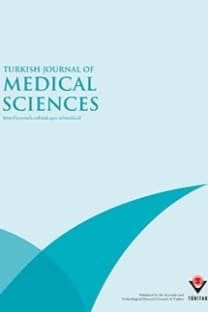Pediatric Emergency Care Applied Research Network head injuryprediction rules: on the basis of cost and effectiveness
Pediatric Emergency Care Applied Research Network, cost, effectiveness, computed tomography,
- ISSN: 1300-0144
- Yayın Aralığı: 6
- Yayıncı: TÜBİTAK
Farideh DANESHPOYA, Mojtaba KARIMIPOUR, MASOUMEH ZIRAKJAVANMARD, Bagher POURHEYDAR
Alper KARALÖK, Reyhan ÖCALAN, Ahmet Taner TURAN, Levent ŞİRVAN, Tolga TAŞÇI, Tayfun GÜNGÖR, Murat ÖZ, Mehmet Mutlu MEYDANLI
Osama BEKHET, Jelena VEKIC, Aleksandra ZELJKOVIC, Dusan PARIPOVIC, Tamara GOJKOVIC, Jelena JANAC, Vesna SPASOJEVIC-KALIMANOVSKA, Amira PECO-ANTIC, Gordana MILOSEVSKI-LOMIC, Zorana JELIC-IVANOVIC, Aleksandra STEFANOVIC
Nevzat GÖZEL, Ahmet KARATAŞ, Meltem YARDIM, Mesude Seda AYDOĞDU, Ramazan ULU, FATİH DEMİRCAN, Faruk KILINÇ, Burak ÖZ, Emir DÖNDER, Süleyman AYDIN, Süleyman Serdar KOCA
Nilgün ÖZÇAKAR, Akça Toprak ERGÖNEN, Mehtap KARTAL, Hakan BAYDUR
Ali NOROOZI AGHIDEH, Shaban ALIZADEH, Hamed HASSANI, Alireza KHOSHDEL, Seyed Reza SHARIFZADEH, Mohamad Foad HEYDARI
Ünal BIÇAKCI, Berat Dilek DEMİREL, Oğuz AYDIN, Rıza RIZALAR, Ferda ALPASLAN PINARLI
The reno-protective effects of atorvastatin in crush syndrome and rhabdomyolysis:is there a dilemma?
Başar CANDER, Ahmet ÇAĞLAR, Demet ACAR, Emine Nur ÖZDAMAR, Mustafa GÜLPEMBE, Can Gökay YILDIZ, Kerem AÇIKGÖZ
Nevres Hürriyet AYDOĞAN, Hacı Mustafa ÖZDEMİR, Abdurrahman SAKAOĞULLARI, Bertan CENGİZ, Metin IŞIK
Ali ÖZGÜN, Asuman SARGIN, Semra KARAMAN, İlkben GÜNÜŞEN, İşik ALPER, Fatma Zekiye AŞKAR
